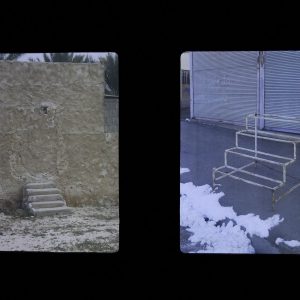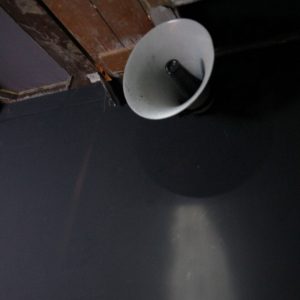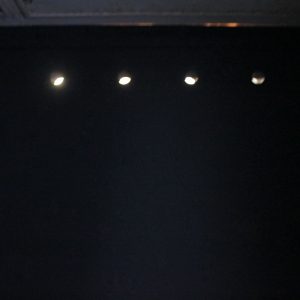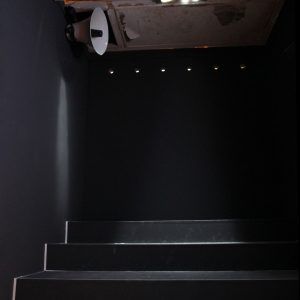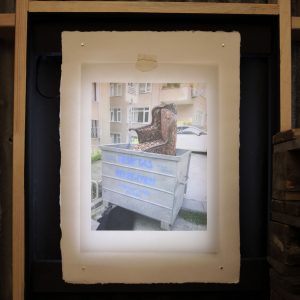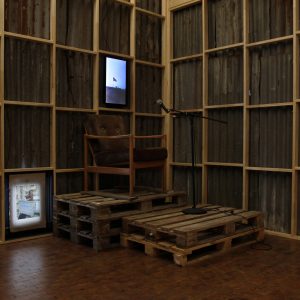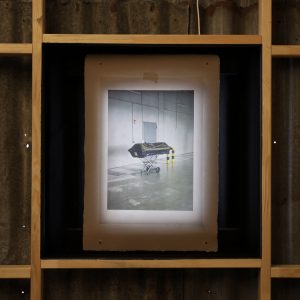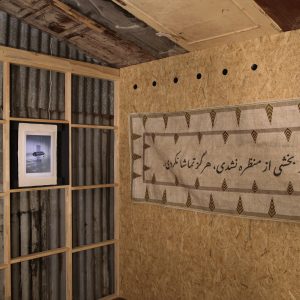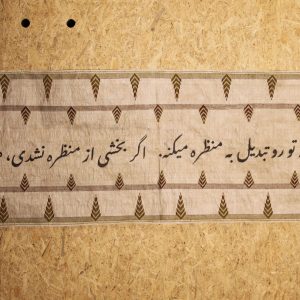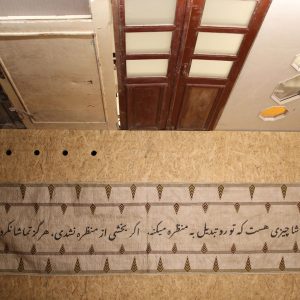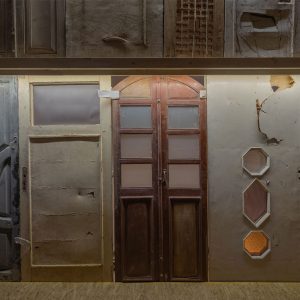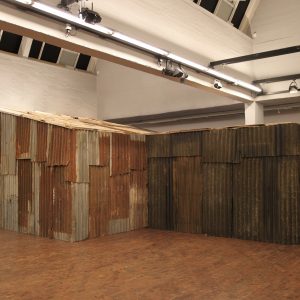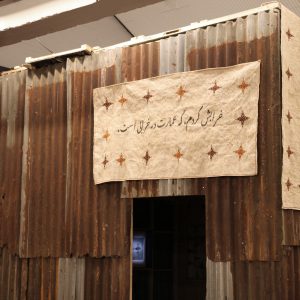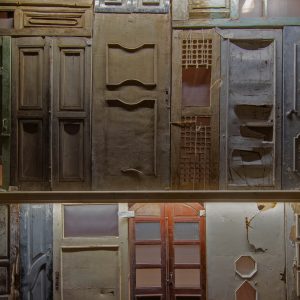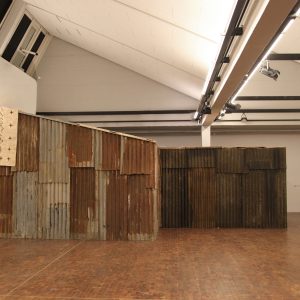2024
Installation, 3,5 × 4,5 × 8,5 m
Every place has its own alphabet: an exclusive language in which it responds to the surrounding environment and tells us whose milieu it has constituted, and to whom it beckons. At a higher level, it defines the spiritual climate of that place.
The seeker of realms longs to capture the spirit of places. She feels that she belongs to none and to all. She picks a word and a letter from each place and each language. She makes a borrowed, patchwork body from the body parts of others. Out of a thousand pieces, these body parts make up a home together. The seeker fashions a home that stands in admiration of any concept of home, but simultaneously regards it with a grimace. Every time she is rejected by circumstance, the home becomes embodied in a different corpus. She parts with every home. She lets go and is let go: suspended somewhere between being the narrator and the narrative itself, between watching and being watched, between reality and its double.
Can she who seeks the answer to the question, “Which ship belongs to Theseus?” and has found herself amongst many different selves, find the Theseus who dwells within her?-Mahsa Aleph’s installation features a space constructed from discarded building materials found in dumping sites in the outskirts of Tehran. This material, often used by migrant workers to construct makeshift homes, prayer spaces, and other shelters in Iran, has traveled miles to find its place in this installation. This space speaks of territory, of margins, and of multiple identities embodied in multiple bodies and spaces. It speaks of otherness and of gender roles: of who sees whom and what happens “in”and “in-between” segregated spaces. Mahsa’s work fosters contemplation about where we consider to be home and to what degree that home mirrors our true selves.
Mahsa Aleph’s installation features a space constructed from discarded building materials found at dumping sites on the outskirts of Tehran. Often used by migrant workers to construct makeshift homes, prayer spaces, and other shelters in Iran, this material has travelled miles to find its place in this exhibition. This space speaks of territory, of margins, and of multiple identities embodied in multiple bodies and spaces. It speaks of otherness and of gender roles: of who sees whom and what happens “in” and “in between” segregated spaces. Mahsa’s work fosters contemplation about where we consider to be home and to what degree that home mirrors our true selves.
